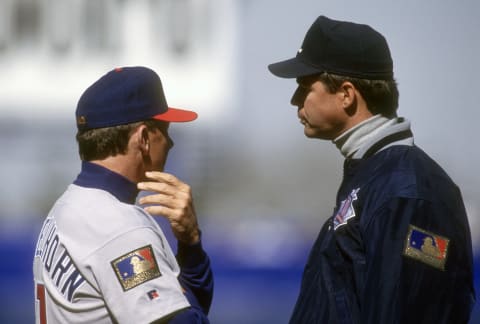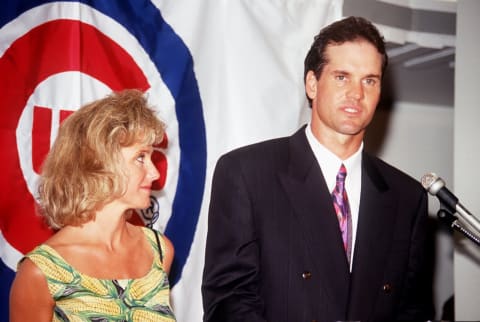MLB Lockout: Looking back at the 1994 Chicago Cubs


August 12, 1994. MLB players went on strike, leading to a long-lasting battle between the union and the owners. For the first time in the modern era, there was no World Series played. The game returned in 1995, but the damage was done. Today, Chicago Cubs fans are feeling a similar sting with the lockout that began this past week. This lockout is the first work stoppage in MLB since 1994.
Hopefully, this does not last long enough to cancel some or all of the 2022 MLB season. What made 1994 really hurt was the fact that the season was over 100 games in when the season stopped and it never resumed. Montreal Expos and Chicago White Sox fans were especially disappointed as they looked like the pennant favorites in each league. For the Cubs, it was incredibly sad, but there was no potential championship taken away.
The 1994 Cubs ended with a 49-64 record, 15 games below .500. For the first time in history, the 1994 season featured three divisions with the Cubs in the NL Central. Chicago finished dead last, 16.5 games back of the division-best Reds. They were managed by Tom Trebelhorn under GM Larry Himes. Himes would be fired in October.
Here is a breakdown of the roster and notable moments of that season before the strike.

Chicago Cubs: The roster had some big names, but not enough to win in 1994
Popular names on the team included Sammy Sosa, Ryne Sandberg, Shawon Dunston and Mark Grace. Sandberg was winding down in his career and Sosa was beginning to make a name for himself at age 25. Grace was right in his prime at age 30.
Sosa hit 25 home runs and stole 22 bases. He had reached the 33-home mark in 1993 and had he played in a 162-game season he probably could have matched or passed it. The other double-digit home run hitters on the squad included Dunston (11), Glenallen Hill (10) and Steve Buechele (14). Sandberg really struggled with a .238/.312/.390 slash and only five home runs in 57 games. Overall the Cubs hit .259/.325/.404 as a team.
Other names to note included longtime starter Steve Trachsel, who was only 23 and reached 20+ starts in a season for the first time in his career. He had made his MLB debut in 1993 but only started three games. In 1994 Trachsel pitched to a 3.21 ERA and 1.3 WHIP in 22 starts. Three-time All-Star reliever and current MLB Network analyst Dan Plesac also pitched for the team but struggled with a 4.61 ERA. Overall the Cubs pitching staff posted a 4.47 ERA, 1.4 WHIP and 4.46 FIP.
Closer Randy Myers was the lone representative for the Cubs in the 1994 All-Star Game in Pittsburgh. He converted 21 of 26 saves and pitched to a 3.79 ERA and 1.4 WHIP.

Chicago Cubs: Despite poor record, 1994 had a lot of memorable moments
Michael Jordan faces the Cubs at Wrigley Field
One of the most exciting baseball exhibition games ever took place on a cool spring day on April 7, 1994 when the GOAT suited up for the White Sox in the preseason. Jordan had retired from basketball in 1993 to pursue his dream of playing professional baseball. He was with the White Sox in camp before being sent to the Double-A Birmingham Barons.
Fans filled Wrigley Field to watch their former NBA hero play on the diamond. The results of the game came second, Jordan came first. He got standing ovations for every little thing he did, even catching routine fly balls in right. Jordan went 2-for-5 with a double and two RBI in and the game ended in a 4-4 tie.
Tuffy Rhodes goes off on Opening Day
Dwight Gooden and the Mets got a taste of Cubs outfielder Tuffy Rhodes on Opening Day when he hit three home runs. He was the first player in National League history to hit three home runs on Opening Day and the first player in MLB history to hit three home runs in this first three at-bats of a season. Rhodes would only hit five more home runs the rest of the year.
Trebelhorn’s “Firehouse Chat”
It is not often a manager meets with a mob of angry fans outside the ballpark after a losing streak, but that is exactly what manager Tom Trebelhorn did after the Cubs ninth-consecutive home loss on April 29. Glenallen Hill had hit into a game-ending double play with the bases loaded in the ninth. He made a promise that if the Cubs would lose, he would meet with the fans outside Wrigley and he kept it. 200-some fans met him outside the firehouse on Waveland Avenue and he talked with the frustrated faithful. It sounded like he was able to calm the nerves of the fans with his calm and friendly persona.
Ryno’s first retirement
Similar to another future Hall of Famer in the city of Chicago who wore number 23, Ryne Sandberg would retire unexpectedly for a first time, only to return about a year after. On June 13, 1994, Sandberg announced he was retiring from baseball. He was 34 years old. In 1996 he returned and played through 1997 when he called it a career for good.
dark. Next. Options for the Cubs to sign after the lockout
When baseball resumed in 1995, things did not get better for the Cubs. It was not until 1998 when they finally put up a winning season and postseason berth again.